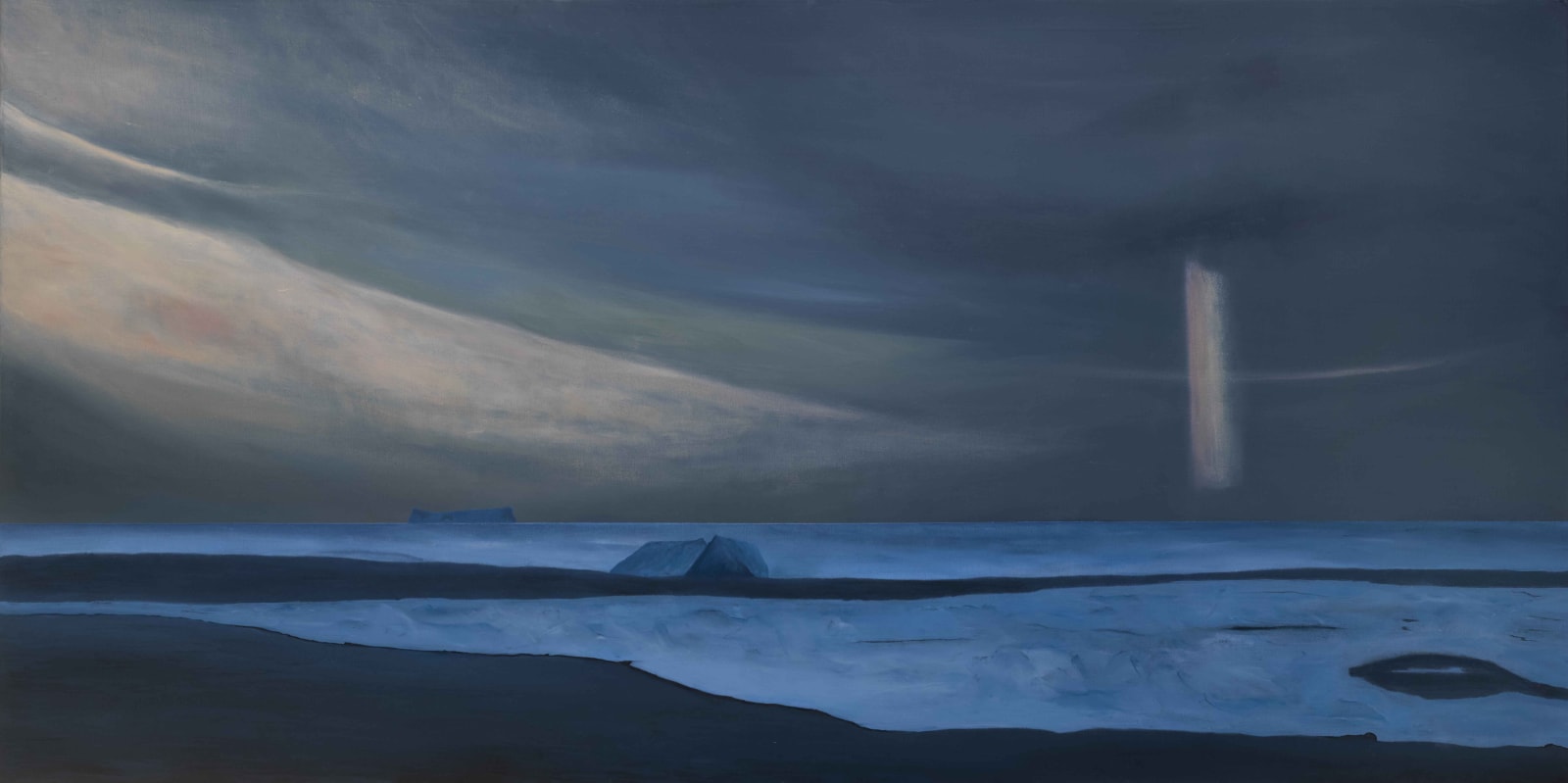Alistair Carr (b. 1970)
"I had arrived on a small propeller plane in a blizzard and, although I did not know it at the time, it was the last flight for a fortnight due to bad weather. My new home, which great early twentieth century explorers like Knud Rasmussen would have known when it was the bakery, was in the Inuit community of Upernavik. And, perched on a sitting room window ledge, a polar bear skull kept westerly lookout over an iceberg-studded sea to the haunting sound of howling huskies. The Inuit had given me the artist's residency and I felt quite comfortable being among these formerly nomadic people, as I had lived and journeyed in some of the world's remotest wildernesses with desert, taiga and steppe nomads. It had been -35ºC the previous week, but the hut was hearteningly cosy and I quickly set to work with my art materials.
"The views out to sea were forever changing. Sunset icebergs resembled wartime flotillas, medieval citadels, Hebridean islets and even the craggy dorsal fin of some Triassic leviathan. Littered along the horizon, there was a sense of migration, as if they knew exactly where they were headed. Sometimes, the ocean dazzled with Arctic blue shades and the bergs glistened in the sun. Then, quite suddenly and even mysteriously, giant fingers of platinum-shaded ice would appear and swiftly transform seascape into landscape, with floes from the shore to the horizon. Arctic grey skies would descend while ravens tap danced on the hut's roof, keeping me company, as it began to snow again and bergs fleetingly appeared, then vanished in the chalky haze. Other days, icebergs were invisible in the dust-like snow, then the floes would once more disappear to reveal a glittering Prussian-blue sea and seabed-stranded bergs that, like bay-anchored yachts, had swung around overnight. Once it snowed for days. Drifts buried the downstairs windows and, during these art-filled weeks, the hardy Inuit stealthily hunted narwhals as they have done for centuries."
